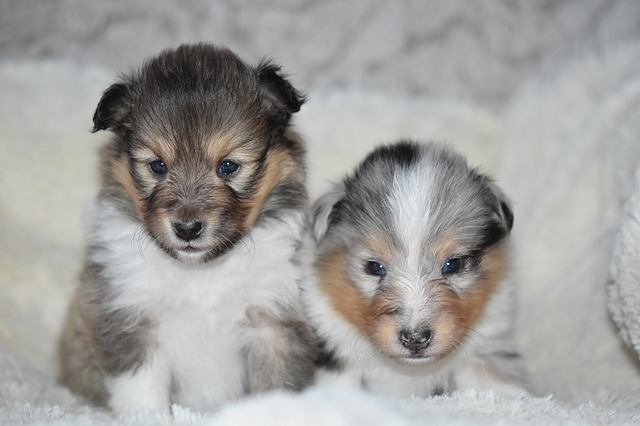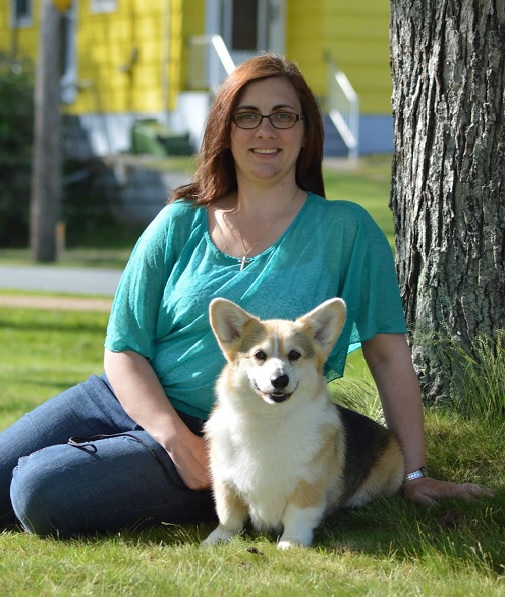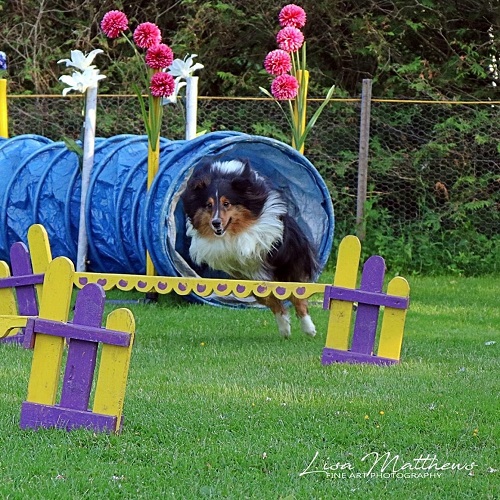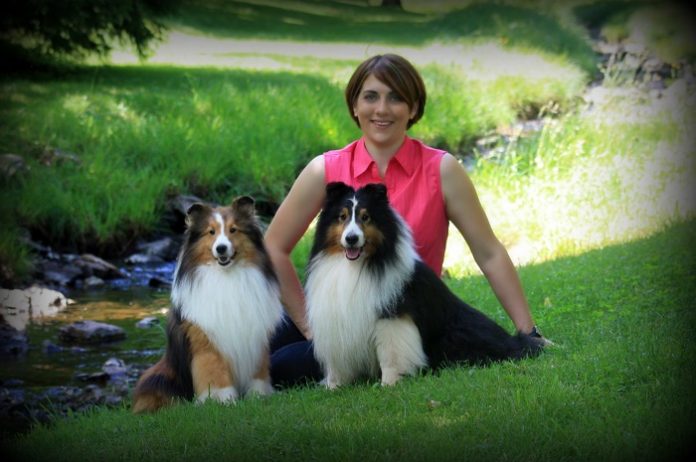If you are looking for a smart, energetic, eager to please dog breed, Shetland Sheepdog might be your choice. These four-legged cuties are considered the one of the smartest dog breeds of them all.
Could you please introduce yourself to our readers?
My name is Cassandra Armsworthy. I live in Truro, Nova Scotia with my two Shetland Sheepdogs and currently work as an associate lawyer in the practice of family law.
When did your passion for dogs started?
I grew up with dogs. My mother started breeding and showing dogs when I was a child, and I was with her from the beginning. I started showing when I was seven and started training when I was nine or ten years old.
What made you choose your profession?
I chose not to pursue dog sports professionally. I did handle it for a few years, but did not enjoy the experience. Instead, I went to law school. I was always academically inclined and the law was an area where I was able to use my talents and help people.
Can you tell us more about this dog breed?
Shelties, or Shetland Sheepdogs, are a fantastic little dog. They are smart, energetic, eager to please, and always ready to work. They are also a devoted breed, who will quickly attach themselves to “their” person. However, those same traits also mean you need to be very careful when choosing a puppy and in the early stages of socialization and training. As a smart breed, they will try to out-think you or try to understand situations on their own. They can be busy and mischievous. If their energy and intelligence aren’t channeled from an early age, they can easily become hyper, skittish, barky, and difficult to manage. Their devotion can turn into shyness, and while the breed is supposed to be reserved towards strangers, they are never supposed to be shy or afraid. It is also why it is really important to ensure that you are purchasing from responsible breeders who have selected for strong and stable temperaments.
Can you describe your philosophy of raising a dog?
Consistency, consistency, consistency. The biggest mistake I see Shetland Sheepdog puppy owners make (and admittedly have made on occasion myself) is allowing behavior from a puppy that they would not tolerate in an adult dog. Decide from the beginning what behavior you will and won’t tolerate, and then be consistent in your training. It can’t be okay just because he’s cute.
My other major philosophy is that you should always be training your dog and working their mind. It doesn’t have to be formal training, like obedience or rally or flyball. Just train them in something. Musical freestyle, tricks, anything you can think of. Dogs were meant to have jobs, and they have the intelligence to carry out those jobs. When we put them in a home and do nothing with their mind, we invite trouble. I create new games and tricks for my dogs to play all the time. My youngest, Micah, knew 20-30 different tricks by the time he was six months old and we’ve kept adding to that repertoire. Sometimes it’s something as simple as making him figure out how to get his toy out of a deep bucket or off of a shelf. Anything to make him think.

Can you tell more about puppies?
I think that people over-romanticize the notion of having puppies and raising puppies. It’s fun to cuddle and play with puppies, but the process of breeding and whelping is not for the faint of heart. I’ve lost entire litters, nearly lost my girls, had to endure nerve-wracking c-sections, spent hours awake with puppies just to have them die – all of it. With my last litter, I spent a full week tube-feeding one puppy every two hours because he was struggling. For a week, I never slept more than an hour at a time trying to keep this puppy alive. And at the end of the week, the puppy died. That’s the reality of breeding dogs.
If you’re breeding dogs because you think it’ll be fun or you want to the experience or – worse of all – to make money – then don’t. You should only breed if you are committed to improving the breed, to strengthening the gene pool for future generations. Otherwise, buy a puppy and just have fun cuddling and training and playing with them.
Which type of food would you prefer, Homemade or Store-Bought?
I don’t have a preference. I use the food that works best for the dog in question. At the moment, both of my Shetland Sheepdog dogs are on Purina One Small Breed, which they both like and are doing well on.
How about the process of feeding when they are puppies and when grown-up?
Shetland Sheepdog Puppies will usually nurse from Mom until three to four weeks, at which time we start to wean usually using pablum or a similar soft cereal type meal. Those are some very messy first meals. We wean to softened puppy food (dry food soaked in water) with Mom still nursing until about 6-7 weeks, and Mom will usually wean the puppies off herself. By 8 weeks everyone should be eating hard food, with maybe a little water added on. Puppies are fed four times a day.
From 8 weeks until 6 months, I continue feeding puppy food and monitor growth. As long as the puppy is taking any major growth spurts, I continue on puppy food, reducing feedings to twice per day over time until 6-8 months and then change gradually to an adult food. If the puppy has been taking growth spurts or seems to be “bulking up” quickly, I will sometimes change from puppy food at a younger age. It is really individual.
As adults, everyone is fed twice a day, morning and night. Most of my dogs maintain weight on 1 cup of food per day, split over two meals.
What is your best grooming advice for a dog that you can give us?
For a Shetland Sheepdog the best grooming advice I can give a pet owner is to find a good groomer and get in the habit of regular groomings. Have your groomer show you how to do simple maintenance between groomings. Teach your Shetland Sheepdog to tolerate having their feet picked up and held, their head handled, their ears handled (your vet will thank you for this as well). Brush out debris immediately.
If you want to learn to groom your Shetland Sheepdog yourself, find a professional and ask for lessons. It took me approximately two years to learn how to fully show groom a Shetland Sheepdog, so don’t assume you can do it on your own with a YouTube Video.
What ingredients are most commonly the cause of food allergies in dogs?
I don’t think any particular ingredients cause food allergies in dogs. If you’re concerned about food allergies, the best way to avoid that is to buy from a reputable breeder and have a good conversation with them about what issues they’ve faced in the past. A good breeder knows their dogs and will be honest about what foods to avoid. My Pembroke Welsh Corgis used to be quite sensitive to milk and my Shelties have very poor reactions to pork.
How many dogs do you own and what breed are they?
I currently have two Shetland Sheepdogs. I previously owned, bred and showed Pembroke Welsh Corgis and Shetland Sheepdogs under the Chanshek prefix.

What type of training do you offer?
I no longer train professionally. In the past, I offered obedience, agility, and conformation training. I also provided intensive rehabilitation services and evaluations for dogs with serious behavioural issues, to help determine whether such dogs were capable of being rehomed.
How do you deal with good and bad behaviors?
I generally believe in positive reinforcement as a training method. Corrections, to the extent that they are used, are a verbal “no” or “wrong”. Most of the time, my training focuses on paying attention and watching to catch the dog before they have a chance to start the bad behaviour.
Do you use discipline or positive reinforcement to train?
Positive reinforcement.
Do you participate in dog shows? If the answer is positive tell us more about that experience?
I participated in dog shows for more than twenty years and only gave it up in the last five years or so. I started as a junior handler when I was seven, showing Shelties and then moving on to other breeds. Later I began training my own dogs in obedience and agility and eventually competing in the conformation ring with both my own dogs and as a handler. I have handled dogs from all seven CKC groups, shown a number of dogs to the top 5 in their breed, and won multiple groups wins and group placements. In 2001, which I was 17, I won Best in Show with our home-bred Pembroke Welsh Corgi, Xena, which was a great experience and is a wonderful memory. Xena tragically died of cancer only two years later, so I count myself lucky to have that memory.
I continued to show my own dogs as a young adult and also spent several years working as a handler. Also I began mentoring new participants in the sport when I was into my late twenties and early thirties. However, I found that the climate in the show world had shifted. It had become far more hostile. There was more bullying, and people were less welcoming of newcomers than they had been when I was younger. I was on the receiving end of some very negative incidents which started to sour my perception of the sport. Also I was starting my new career as a lawyer and so I decided about five years ago to step away.
I do participate in a non-competitive charity dog agility team, which puts on exhibitions to raise money for charitable causes.

Tell us a story or personal anecdote?
I have returned once or twice to the show ring since leaving the sport, for really sentimental reasons. In 2016, I returned for one weekend when a former client asked me to show her 10 year old veteran Corgi at the National specialty which was being held locally. I had shown this dog throughout his entire show career as a puppy and young dog, including multiple group wins and a major Best Puppy in Show win before he was retired from showing at age three. We knew this would be our very last opportunity to bring him out to the ring again. It was an emotional experience to handle him once again and I was thrilled when we were awarded Select Male over a very strong group of dogs. This beautiful dog loved the show ring and when we took our “victory lap”, ribbon in hand, he was smiling the whole time. It’s a good thing he could basically show himself – I could hardly see through the tears in my eyes.
What would you like to say to our readers?
First and foremost, never forget to just enjoy your dogs. Ribbons and titles are great, but everything can’t be about the next ribbon or next title. It has to be about enjoying this incredible bond with your dog. If he doesn’t enjoy the activity you’ve chosen. Move on. Choose something else. No ribbon in the world is worth making a friend who loves you as much as your dog does miserable.
Thank you Ms.Cassandra Armsworthy for the detailed interview, we would like to wish you great success on future dog shows.





